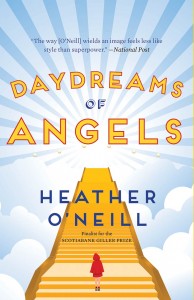Fables for adults: Book review
O’Neill’s collection of short stories is alive with talking bears, toymakers, and grandparents. But make no mistake: These fables are for adults.
Share
Daydreams of Angels
Heather O’Neill
This magical and inventive collection of short stories, O’Neill’s first, is alive with talking bears, toymakers, grandparents and orphans—lots of orphans—but make no mistake: These fables are for adults. Some are R-rated, even, pointing to the darker themes that lurk beneath their madcap surfaces.
O’Neill’s stories redeem a heroin addict, who explains that “scholars are like therapists, but for books.” They reclaim the dignity of a welfare family. They introduce us to Mary Magdelene and Jesus in elementary school, as well as to a crazy Russian scientist who tries to clone Rudolf Nureyev (spoiler alert: the clones defect). We meet an inner-city prophet turned Unabomber, and poetic twins in self-imposed exile.
There is a balance of stories set in the present day with timeless fables and stories from the Second World War—the best in the collection. A grandmother explains that in the 1940s, mothers got their babies at the beach. A grandfather describes the world before the war, when people rode hot air balloons and their tattoos of mermaids came to life. We visit an illegal doll hospital in occupied France, where a wounded Canadian soldier learns how to love. Sex and death merge in an unsettling fashion in the collection’s title story, and again in a survival story told by a Jewish war bride. The bittersweet edge to these stories could make you cry, if you weren’t soon treated to a delightful tale from a granddad who claimed to board the train up to heaven in 1942. Your disbelief? Easily suspended.
O’Neill’s stories touch on the nature of artistic creation. They mock the pursuit of fame and they celebrate solitary outcasts of all kinds. Her similes are rich (“pink hothouse roses that looked like cancan dancers lifting up the fronts of their skirts”), calling for illustrations that, one day, I hope, may accompany subsequent printings. Readers will wonder why the book jacket doesn’t feature roses, cellos, butterflies or rubber boots—recurring motifs throughout the collection—but book covers are always a mystery. Let’s ask the talking bear.
